












www.echo.net.au/sustainability
Editor: Aslan Shand
Contributors: Belle Budden, Mandy Nolan, David Lowe, Dr Willow Hallgren, Aletha Zylstra, Eve Jeffery
Advertising team: Crystal Appo, Kim Beaver, Anna Coelho, Jacki Coward, Lesley Hannaford, Kate Messenger, Katie Thompson
Design & production: Ziggi Browning, Tamsin Smyth
Front cover design: Tamsin Smyth
© 2024 Echo Publications Pty Ltd • ABN 86 004 000 239 64 McGoughans Lane, Mullumbimby NSW 2482 • 6684 1777
Printed on recycled paper
Some Sustainability 2024 highlights:
▶ To fly or not to fly? P5
▶ Climate change and flooding P6
▶ The illusion of fences P8
▶ Rebuilding for the future P10

There
25 years ago, Rainforest Rescue had a mission to protect the under-protected rainforests of Australia. Since then, we’ve embarked on restoring and connecting up the damaged and fragmented parts of the irreplaceable Daintree Rainforest.
What hasn’t changed is the incredible and generous support of people like you. Your involvement matters more than ever, as we work together in fighting the climate and biodiversity crises for a brighter future. Thank you.

Discover how rainforest action is climate action at: rainforestrescue.org.au/thrive

there is still hope
In 2023, scientists from around the world said that action needs to be taken on climate change before it is too late. They made the call for action through the Intergovernmental Panel on Climate Change (IPPC), with UN secretary general, António Guterres, saying, ‘This report is a clarion call to massively fast-track climate efforts by every country and every sector and on every timeframe. Our world needs climate action on all fronts: everything, everywhere, all at once.’
It was reiterated by another 12 international scientists in the journal Bioscience where they stated that human activity is pushing Earth into a climate crisis that could threaten the lives of up to six billion people this century. They showed that 20 of 35 identified planetary vital signs are at record extremes.
‘We are afraid of the uncharted territory that we have now entered,’ they said. Yet governments fail to act and instead, like the Australian Labor Party, push a ‘gas transition’ taking soft actions rather than driving hard for change. The NSW Labor government is yet to rein in land clearing with the Australian east coast being the only first world country to be declared as a ‘deforestation hotspot’.
This can all feel overwhelming and can often leave people struggling to find a way to make a difference; but in reality it is up to every person to choose to make a difference where and when they can.
For some people it is direct action saving forests and ecologically sensitive areas, for others it is working within the system to create policies, legislation, and actions at all levels of governments to create change. For everyone it can be the choice of energy supplier, what to drive – a fossil fuel vehicle, an electric vehicle, or to get on your bike. Will you fly, drive or train on your next holiday?
For others it is a decision to join Landcare, become a bush regenerator or join a river protection group. The Richmond Riverkeepers Association was recently launched in Ballina to bring the community together with the aim of bringing the Richmond River back to a drinkable, swimmable, fishable river for all the communities along it.
The Big Scrub Landcare group aims to restore and preserve the Big Scrub rainforest of the Northern Rivers and South-East Queensland while Rainforest Rescue is taking donations to directly buy back parts of the Daintree Rainforest.

At a local government level you could run for the upcoming council elections, and yes, you can make a difference. From directing the development of policies like the Cool Towns policy that Tweed Shire has been promoting; to making decisions on where to put housing; which local areas, koalas or other native species need protection; to how we develop and maintain our water security in the region you can have real and tangible impacts on your local environment and community. Yes we need to take action to limit the impacts of climate change, and yes our decisions both large and small can make a difference. My next step might be as simple as tackling some of those weeds in my garden and planting a few native plants to help native species survive. Every action makes a difference, now is not the time to lose hope.
Aslan Shand, editor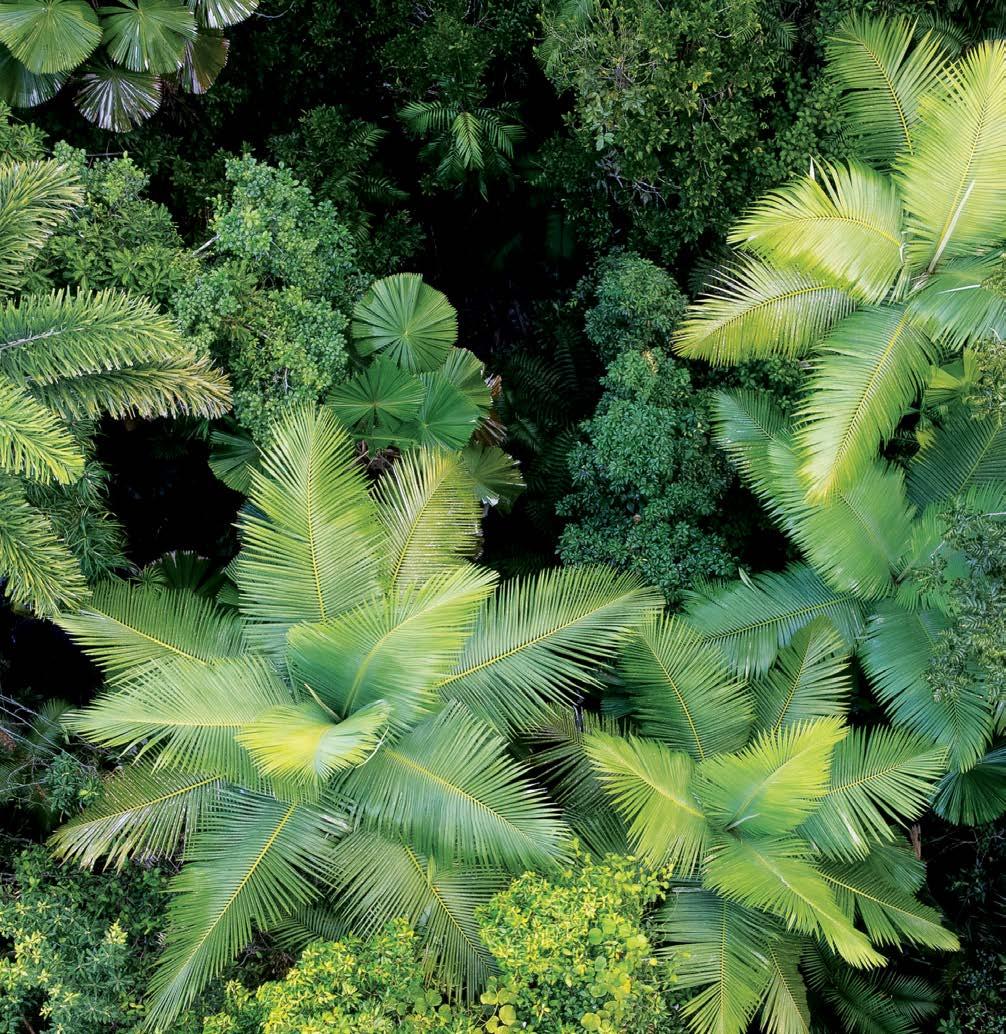
Sustainability is intrinsic to Aboriginal cultural frameworks, all ways of being, knowing and doing. It’s about being in the right relationship with Country, and all the endemic species being in the right relationships, in the kinship Country for Country, Jagun
For thousands of years Aboriginal people have been custodians of Country utilising cultural land management practices to help to keep this balance. Local Aboriginal organisation Jagun Alliance are working across the region to help to restore these cultural practices that have sustainability at their core.
Jagun Alliance are working to grow public awareness and recognition of the importance of Aboriginal custodians and land managers to care for and manage land and sea Country. They educate landowners, framers and other stakeholders about how they can be better custodians of the land they own.
Building partnerships, Jagun Alliance are promoting investment in culturally informed natural resource management across the Northern Rivers region. They are implementing innovative projects to heal country through conservation and natural resource management.
This process is informed by 60,000 years of knowledge and wisdom. Through building partnerships to benefit the care of Country, Jagun Alliance are aiming to achieve their vision for healthy Country.
Oliver Costello is the Executive Director of Jagun Alliance. Oli is a proud Bundjalung man from the Northern Rivers of NSW, and he has a diverse range of personal and professional expertise in culturally connected stewardship of Country. He is currently focused on First Nations knowledge and practice in caring for Country through regenerative cultural practices that support preparedness, recovery, and resilience in relation to fire, floods and storms. He has extensive experience working within the Indigenous land and sea management, conservation, and cultural heritage management sectors, and has been particularly interested in empowering Aboriginal perspectives on fire, threatened and culturally significant species.
‘What we do is revive our cultural land management, our practices of caring for Country. We bring people together to care for Country, support people who are committed to care for Country, and to work holistically with cultural practices to make Country well again,’ explained Oli.
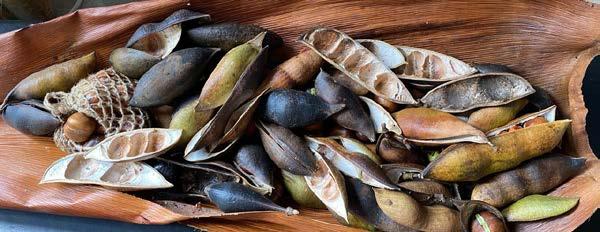
‘Our people cared for Country for many thousands of years. Colonisation has had a huge impact on our cultural land management and our relationship with Country. We are working to build partnerships to bring people together to maintain these cultural practices, to care for Country.’
Oli explained that there is a lot of focus on disaster response and addressing climate change and Jagun Alliance are committed to this work and more.
‘It’s about a holistic approach to caring for Country, to see ourselves as humans as being in relationship with Country, not separate from or bad for Country. We have to see ourselves, and other native species as being part of Country and listen to Country about what it needs.’
Jagun Alliance are working with our communities, learning from our own old people to strengthen cultural land care practices that have existed for thousands of years, such as cultural fire management, and native food cultivation and preparation across South Eastern Australia.
‘There are different types of fire such as maintenance fire where Country is pretty healthy, and you burn it at the right time and then we are working with Country to burn itself.
‘When Country is sick it takes a long time to get it healthy again. We want to focus on our pathways and corridors and old camp sites to reconnect to these stories of Country. This is of physical benefit to the land but it also of spiritual benefit to our people as we are
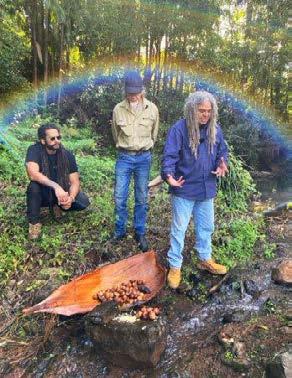
able to get back on Country and to reconnect with our stories,’ Oli shared.
Oli has worked extensively with Western land management systems and is committed to working to create change for Country.
‘Most mainstream land management practices have created systems that are based on a Western model of economy and land management. We are working to engage with local landholders and stakeholders in the importance of cultural land management, especially fire.
‘Supporting farmers to learn better practices so that they have better outcomes for Country. We want to see the rivers and the soils healthy which will benefit farmers and all the stakeholders.’


Right now there are more than 180,000 electric vehicles (EVs) on Australian roads.
New EV purchases more than doubled last year with a growth trend of doubling the EV market, every year since 2020.
By 2035 it is expected that all light vehicles sold in Australia will be electric. That petrol car you are driving is a dinosaur.
We still have a long way to go. As at January 2023 we had 21 million registered vehicles. Our poor public transport infrastructure and the long distances to travel in remote and regional Australia has meant that 91 per cent of households own a car. When it comes to emission reduction, transitioning from carbon emitting vehicles powered by fossil fuels is a no brainer.
Forty per cent of Australians have said they want their next car to be an electric vehicle. And why wouldn’t you? They’re quiet. They’re clean. They’re fast. Yep, even a small electric car has impressive power. I accidentally dragged-off and beat a lowered, hotted up Commodore in a little Nissan Leaf at a traffic light. The accelerator response is immediate

and surprising.
So performance isn’t a barrier to purchase.
The barriers currently are price, range and availability of fast charging stations. Urban drivers are most likely to transition to an EV as they travel shorter distances and have access to charging stations.
I asked an Uber driver in a brand new EV how often he had to charge
his car. He had a range of 450 kilometres. As a regionally based person who travels for work, I can cover that distance in an afternoon, and need to do it again that evening to return home. But for my Uber driver, who drives every day, he only needs to charge every three days.
Right now in Australia people with EVs fit the early adopter profile that has been seen globally. They are predominantly male, 45-54 years of age, living in houses, working full-time or retired, and have a high household income. So
‘I accidentally dragged-off and beat a lowered, hotted up Commodore in a little Nissan Leaf at a traffic light.’
– Mandy Nolan
right now the target market for EV uptake seems to be young, urban, tech-savvy customers who value convenience, sustainability, and innovation.
Right now the affordable entry point to the EV market has been electric motorcycles. With bikes available under $5,000 and $10,000 it is clear that electric motorbikes are transforming the way we travel. Although limited charging infrastructure and length of time for charging is still one of the major barriers to uptake.
Right now the challenge is to create reliability and dependence in the regional market. EV owners have access to apps such as PlugShare and ChargeFox that give details of current EV charging stations around the country.
The ultimate goal for regional energy use is to be able to use solar to run your home, to charge your car and even use your car battery as a storage device for solar energy. This kind of energy efficiency will transform regional Australia.
The MG4 is currently the cheapest EV available in Australia. With a range of 530k available for $52,990. With regional wages and earnings significantly less compared to urban areas, and with regional areas requiring higher range, therefore more expensive vehicles, some sort of regional subsidy may be the way to encourage regional EV growth.





It’s only 116 years since the first passenger flew in a plane. Now flights are so cheap that many people regard flying as a birthright, and any threat to this as something existential. The problem is that the real costs of flying aren’t represented in your airline ticket, even if you click the carbon offsets box.
Because jets burn their fuel so high in the atmosphere, choosing to fly is the most warming choice most humans can make. In terms of CO2 and passenger kilometres, flying in economy class is worse than driving a typical petrol car (first class is twice as bad).
Because the average distances are so much greater, orders of magnitude are involved, with a single return flight from Sydney to London generating more CO2 per average passenger than driving a car for a year, which is itself much worse than greener alternatives. Most of these long haul flights aren’t to visit dying relatives, or to do something that could be done on Zoom (like attend a climate emergency meeting), but are for holidays.
Since the brief hiatus of Covid,

passenger flight numbers have exploded across the world, with an additional 44 million litres of jet fuel being burned each day (four times faster than the previous rate of increase), generating 915 million tonnes of CO2 in 2020. That exceeded the combined yearly emissions of 135 nations.
Only ten per cent of the global population currently take regular flights, but passenger numbers are steadily increasing. Airline fuel efficiency improvements aren’t remotely keeping up, with almost two gigatonnes of CO2 expected to be generated by aviation in 2050 if current trends continue.
Other emissions from passenger jets include nitrogen oxides,
water vapour, hydrocarbons, sulphur oxides and black carbon. Research has shown that these gases and particles interact in the upper stratosphere and lower stratosphere to further contribute to global warming, either in the short or long term.
Intergovernmental Panel on CLimate Change (IPCC) reports have assessed total aviationcaused global heating effects to be three times what they would be considering CO2 alone. The overall warming trend from all this atmospheric pollution is accelerating, with 3.5 per cent of global heating caused by aviation from 1940 until 2018, up to 5.9 per cent in 2018 alone.
The aviation industry has responded to environmental concerns by talking up offsets, alternative fuels and ‘net zero flying’. Sustainable Aviation
Fuel (SAF) is an alternative to conventional fossil fuel, produced from things like cooking and plant oils (competing with food needs), algae, agricultural/forestry residues and waste gases.
However, to be truly sustainable, it can’t be created by turning large areas of agricultural or forested land over to fuel production.
Unlike carbon capture, SAF is a real thing, and is already being used by the aviation industry, mostly in the form of blends, although there have been successful test flights using 100 per cent SAF. Unfortunately it’s expensive (currently four times the price of kerosene), and there’s nowhere near enough of it. 100 million litres of the stuff was used globally in 2021. 450 billion litres a year of SAF would be needed by 2050 for the aviation industry to reach net zero.

Small electric planes exist, but massive advances in battery technology will be required before electrification can be a realistic option for large-scale passenger transport.
One of the many ironies of air travel is that global warming is damaging many of the places tourists are flying to visit. Carbon offsets might give you a warm inner glow, but many of the forests which that money planted have since been burned in bushfires.
Sadly for those who enjoy the magical experience of flight, unless airships return, or you’re that guy flying over the English Channel on a pedal powered plane, air travel is simply not sustainable.


There is significant scientific evidence that our weather is getting more extreme; extremely hot days are toppling old records and creating new heat records almost yearly, heatwaves are getting hotter and lasting longer, and ‘flash’ droughts and ‘unprecedented’ flooding rains are wreaking havoc across the country and beyond, with alarming regularity. One could be forgiven for thinking we are in uncharted territory, except the Intergovernmental Panel on Climate Change (IPCC) has been giving us guidebooks to this unfolding devastation for decades now…
Of particular concern for the Northern Rivers region is the unprecedented flooding which occurred when the February 2022 floods obliterated previous records. Although there are many factors that contribute to the risk of flooding, the most important weather-related factors include how extreme a rainfall event is and how wet catchments are prior to the rain event. The 2022 flood was due to extreme rainfall from a combination of severe
thunderstorms interacting with an east coast low, falling on an already La Nina-sodden catchment.
Indeed, extreme rainfall events are known to have increased in both frequency and intensity since the 1950s, with human-induced global warming the main culprit. Since 1910, Australia’s climate has warmed by 1.47 degrees, and it is often cited that for every degree of heating, the atmosphere is able to hold about seven per cent more water vapour. This would be bad enough, however, when that water vapour condenses in the atmosphere into raindrops, it gives off heat, which fuels stronger convection that ‘supercharges’ thunderstorms.
In a review of the latest climate science to guide flood preparedness, Australian scientists have shown that for each degree of global warming, the increase in the intensity of rainfall was about 7-28 per cent for hourly or shorter duration rainfall, and 2-15 per cent for daily or longer rainfall. This is remarkable, since not only is this far more than the seven per cent per one degree increase, but unfortunately also far more

than the five per cent increase per degree warming that is currently cited in existing flood planning standards.
This means that infrastructure that is being built to these standards is probably woefully inadequate for the rainfall extremes and megafloods of a planet which many climate scientists now think will experience 2.5 degrees of heating There’s surely some terrifying maths right there!
As depressing as this is, spare a thought for people who are not living in what will likely remain
essentially a high-rainfall area* as the climate cookie crumbles over the next few decades. A new study Climate change isn’t producing increase in atmospheric moisture over dry regions has found that this relationship between increasing temperatures and atmospheric moisture only holds in humid areas. In arid and semi-arid areas, water vapour in the atmosphere has generally remained constant, even as temperatures rise, which in effect dries out the air. Combined with extreme heat, strong winds, and high fuel loads, we have a recipe for increased fire
risk. Besides the increased risk of bushfires, an increase in aridity is concerning for large swathes of Australia, which could face even higher-than-previously-predicted risks of extreme heat and water shortages.
*According to the NSW government our beautiful North Coast region will likely experience an increase in autumn and spring rainfall in both the near and far future and a decrease in winter rainfall in both the near and far future (there is not much consensus on how summer rainfall will change).
• https://tinyurl.com/mpr6ryh9
• Wasko, C., Westra, S., Nathan, R., Pepler, A., Raupach, T., Dowdy, A., ... & Fowler, H. (2023). A systematic review of climate change science relevant to Australian design flood estimation. Hydrology and Earth System Sciences Discussions, 2023, 1-48.
• https://tinyurl.com/3y5ht7e5
• https://tinyurl.com/5677z7p6
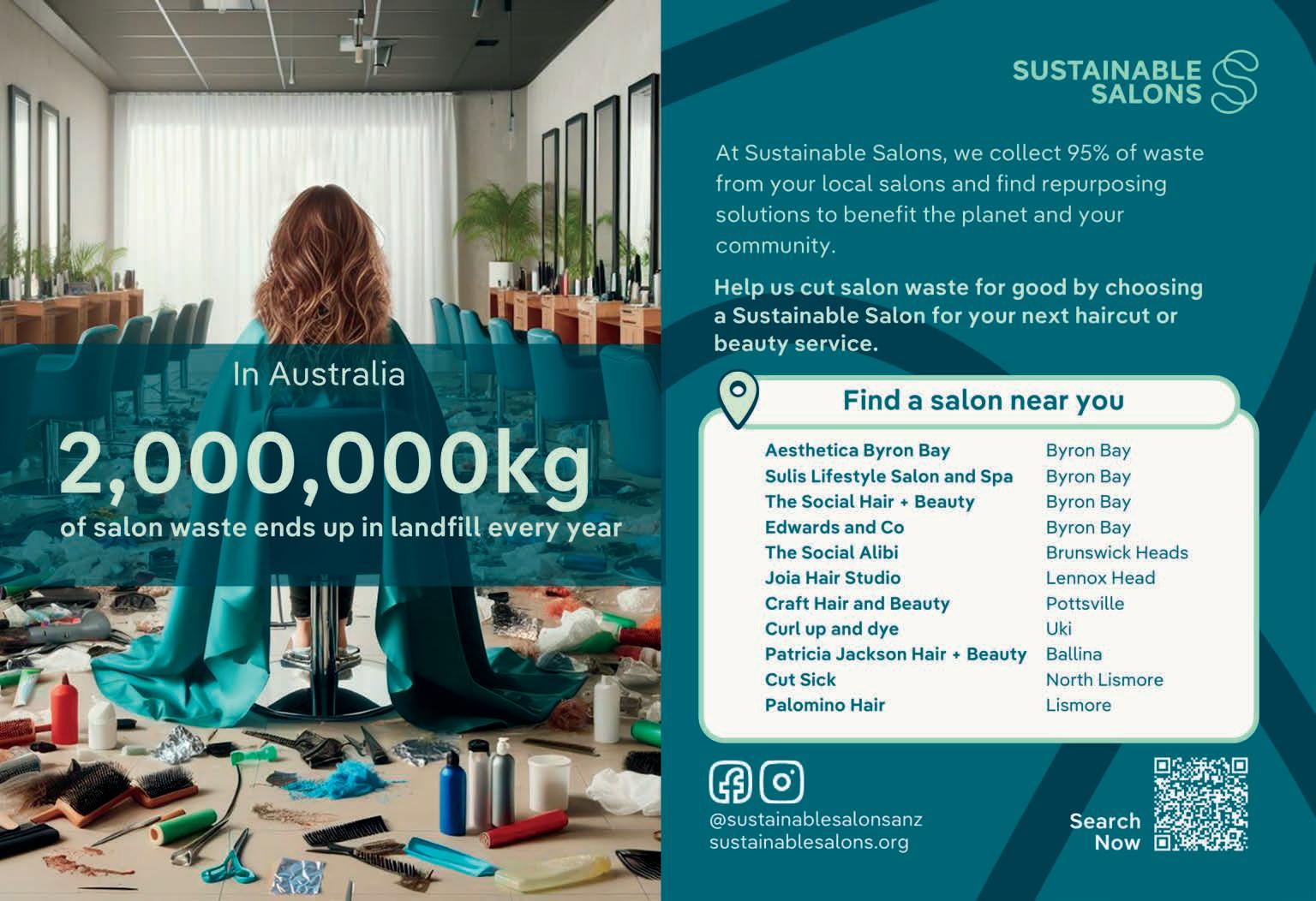



Driving along lush corridors of filtered sunlight on my way to study bush regeneration at TAFE, the scenery around me gradually took on a different character. Tree-lined tunnels were recast as dementor-like dank shadows of once vivacious ecosystems.
Elegant arching forests, once their legions were named, ‘camphor’ and ‘privet’, became sinister foes. They were everywhere I looked; creeping along fence lines, choking creek banks, dominating neglected paddocks, taking every advantage across this fractured landscape, and ushering in an ominous paucity of species – plant and animal.
If all that seems overly emotive, see how these statistics sit with you: Australia has 19 ecosystems on the brink of collapse. Of their many pressures, weeds are a major threat for about 90 per cent of endangered ecological communities and affect more than 40 per cent of the threatened species (mostly plants) within those communities.
We’re ranked #1 in the world for mammal extinctions – 34 at last count – and we’ve held that shameful ranking since colonisation.


We are the only developed, wealthy country to be listed as a global deforestation hotspot. What does that translate to? In the last 22 years Australia has lost 9.03 million hectares of forest to fires, logging, agriculture and other drivers of deforestation such as ‘development’. To put that into some local perspective, the Big Scrub rainforest once covered 75,000ha. It took 60 years to clear it: 9.03Mha in 22 years is about 120 Big Scrubs gone in just a third of the time.
Add to this picture the knowledge that the satellite imagery used to map canopy cover, to determine how much forest has been lost, doesn’t distinguish between 95 per cent and 20 per cent cover... so the real figures of loss are potentially much larger.


You can do the maths on that, I’m tapping out to go plant some trees! In half the time it took to clear it, Big Scrub Rainforest Conservancy has restored ‘just’ 300ha of lowland subtropical rainforest and planted more than 1.5 million trees. Knowing what I do now about the time and skill it takes to collect, process and germinate native seed (an art in itself); the dedicated effort that goes into growing the plants to a size ready for planting; the coordination it takes to secure funding for a site; the research, planning and preparation that goes into a site; the time and labour to transport and plant the seedlings; the time and labour to maintain the area planted (keep control of the weeds) while the little trees get established, well crikey – 1.5m trees is a staggering tally and a statement of emphatic and radical hope. Likewise, the efforts of Rainforest Rescue in conserving


170ha of the Daintree in far north Queensland, and edging up toward 400k trees planted, is an awesome achievement.
It is heartening to know, according to the Australian National Greenhouse Accounts 2 4.19Mha of forests were ‘regrown’ from 201018, but – and I want you to read that like a big splintered stump of a 200+ year-old hardwood – the offset accounting in that figure treats knee-high saplings in a plantation as equivalent to trees that are 30+ years old! That’s just bloody nonsense. Quantity of trees planted and the quality of established ecosystems are not equivalent. Global Forests Watch puts tree cover gain in Australia (from 2000-20) at 1.6Mha, and net loss from a variety of causes at 2.52Mha. It’s easy to see how that’s going to play out if nothing changes.
We’re trying! Bush regeneration is a growing industry, but compared to the mechanical advantages and economic imperatives of bushland destruction, it is a slow and labourintensive process. Plants (with the exception of vines) do not appear to share our sense of urgency about the whole thing. Bush regeneration must also contend with the weeds; all 340 listed on the DPI NSW
Weedwise website, which have zero respect for anybody’s fences or our busy lives.
Almost ten years ago, a 2015 report by the ISC detailed weed management as being one of the biggest gaps in NSW environmental laws and policies and highlighted the urgent need for government intervention. While we’re waiting, if everyone learned to identify a handful of weeds and how to manage them appropriately (which doesn’t include throwing them over the fence or dumping them on the roadside) and also practised a little bush regeneration in their own backyard by planting suitable endemic species, or volunteering time with their local Landcare group, it would really help the bigger picture for our native biodiversity.
Facing a climate change future we know that globally, mitigation efforts lie in finding ‘common ground’. Maybe it’s one of those ‘can’t see the wood for the trees moments’ but as a bush regenerator I can’t help feeling it’s not complicated; the common ground we need to find is right here, under our feet. Fences are an illusion.
• We upcycle all our gloves into a product used to make kids playground equipment
• We are conscientious recyclers
• We are a collection site for all used oral care products, which we recycle
• We are paperless
• We use technology to lessen our negative impact on the environment
• We have no carbon footprint
• We used low or no VOC, locally sourced, sustainable materials on our fit out
• We choose to use the most environmentally friendly, bio compatible materials
• We are the only carbon positive dental practice in the world
• We have a fully electric van, called FANG powered by the sun

As specialists in waste recovery and re-use, the ReCirculator team at Southern Cross University is developing solutions to our growing plastic problem by flipping the traditional approach to waste on its head.
Instead of take-make-waste, ReCirculator is looking at a take-make-recreate model and how local businesses can profit.
Now they are working with Northern Rivers business Studio Kite to divert plastic from our local landfills into 3D-printed housing. It’s circular economy thinking for an out-of-the-box solution to two of our most pressing local problems.

The 2022 flood devastated the Northern Rivers. Central Lismore was without electricity for six weeks following the flood that had risen 2.3m higher than any previous recorded flood, topping in at 14.4m. So, deciding to rebuild back in Lismore’s central business district (CBD), when there is no flood insurance, was a big decision for Summerland Bank.
The question they had to ask themselves was ‘is it a wise decision to rebuild back in the CBD when you don’t have flood insurance and with the full expectation that it would flood again?’ said John Williams, Summerland Bank CEO.
‘Should we relocate or do something else, something different? In the end, it came back to our strategic purpose as a business, which is better banking, stronger communities. That’s our purpose for our business. We didn’t think we would be living that purpose if we made any decision other than rebuilding back into the Lismore CBD.’ Summerland Bank have only fully returned to their head office in the Lismore CBD in the last month.


that allow floodwater in and to escape so that there is not pressure from the water on the buildings structure explained John.
‘The main aims are a quick turnaround for reopening (days in lieu of weeks) and the minimisation of damage and waste,’ said Luke.
The building had around three metres of floodwater through it that took several days to drain away. In deciding to return they realised they needed to build back differently so that they could be back in the building as quickly as possibly providing services to the community.
The importance of getting services back up and running was highlighted following the 2022 flood when they established a branch six days after the flood at Southern Cross University.
‘We opened and traded on a Sunday to get cash back out into the hands of our customers. But we also managed to service a number of non-customers as well,’ said John.
They brought on local architects Barker Architects to assist Summerland to determine how they could build back resiliently. To rebuild in a way that will allow a return to operations in the shortest possible time after a flood event meant that they had to ensure they built back resiliently with building materials and designs that could withstand being flooded.
Luke Barker, Principal at Barker Architects, said it was important to ensure there were ‘no cavities for flood water to penetrate. That the materials used are waterproof and can stay submerged for several days and not harbour or encourage the growth of bacteria and other microbial contaminants that cause
long term-health issues for the staff and building.’
They had to ensure that surfaces used were dense, waterproof, and easy to clean (resistant to pressure washing). That services that are exposed are easy to access, repair and or replace as well as using modular furniture that is easily cleaned or able to be moved to higher ground.
‘For non-moveable furniture, for example customer desks, they are made from outdoor grade compact laminate that can stay submerged for days and be easily pressure washed,’ explained Luke.
For the building, Summerland have installed drains in the floors
‘The volume of building waste that came out of the 2022 floods was extraordinary. Investing in the higher quality materials not only means the cost of reopening will be significantly less after the next flood, but the cost on the environment is significantly reduced as well.’
Mr Williams agreed, saying that the modelling for the costs of a future flood event following a sustainable and resilient rebuild will be less than ten per cent of the loss they experienced in 2022.
‘We would expect to be back in the building within two to three days depending upon the scale of the flood,’ said Mr Williams.
‘In 2022, they lost the electricity substations in the Lismore CBD and it took six weeks to get the substations operating again. We could operate at this site with a generator probably within three days following this rebuild.’

The federal government provides a solar discount to home owners and businesses in Australia that install a small scale renewable energy system (solar, wind or hydro) under the Small-scale Renewable Energy Scheme (SRES) to help with the purchase cost. Installing an eligible system allows the creation of Small-scale Technology Certifi cates (STCs). The number of STCs created is based on:
• The amount of renewable electricity the system produces or the amount of electricity consumption it reduces.
• The climate region where it’s installed. Under the package, the federal government will pay around $350 per kilowatt towards cost of a solar system.
This amount reduces at the end of the calendar year (every year up until 2030 when the program is finished) so the right time to invest in solar is now THREE GREAT PACKAGES IF YOU MENTION THIS AD!


Maxine and Daniel are considering a 5.28KW solar system, supplied and installed by ProSolar for $6,937. The federal government discount for this system is $1,938 (at time of publishing). This brings their system cost down to $4999 saving them $1,850 per year enabling them to pay back their investment in 2.98 years!
Alternatively, the same system can be financed for $27 per week. This can be an attractive way to reduce your bill and put the money you would normally pay your power company into your very own power system on your rooftop.
ProSolar provides advice and guidance in a simple and easy way, to ensure you select the optimal solution for your home and budget. This is the best opportunity Northern Rivers families and business owners have ever had to generate our own power. For more information, call ProSolar on 02 7912 0760 or 0482 082 304.
ProSolar has designed three great packages to help you take advantage of the federal government discount.



6.6KW SOLAR SYSTEM
• 15 x JA 440W N-Type BiFacial Panels with a 25-year product and 30-year warranty
• 1 x GoodWe 5kW inverter with a 10-year premium warranty
• Cost $8393
• Less federal government discount of $2394
• Total cost after discount = $5999 or $29 per week.
8.8KW SOLAR SYSTEM
• 20 x JA 440W N-Type BiFacial Panels with a 25-year product and 30-year warranty
• 1 x GoodWe 8.5kW inverter with a 10-year premium warranty
• Cost $11,229
• Less federal government discount of $3230
• Total cost after discount = $7,999 or $39 per week.
10.56KW SOLAR SYSTEM
• 24 x JA 440W N-Type BiFacial Panels with a 25-year product and 30-year warranty
• 1 x GoodWe 10kW inverter with a 10-year premium warranty
• Cost $13,367
• Less federal government discount of $3875
• Total cost after discount = $9,490 or $49 per week.
The above prices include supply, installation (standard installation on a tin roof) and GST. The federal government discount is subject to change at anytime.

Every year The Echo asks the five local councils what they are currently working on to be sustainable and this year the response has been phenomenal –too much to put on the page. Keep your eye on our website for the full stories in the coming weeks.
Tweed Shire Council is committed to a sustainable future and working with the community to protect the region’s internationally significant environment.
To achieve this, Council is focused on reducing the environmental footprint of its operations – it reduced its greenhouse gas emissions by 19 per cent last financial year compared to the previous year.
This positive result can be attributed to reduced electricity use – particularly in water and wastewater pumps and treatment – and a return to pre-flood patterns of vehicle use.
Supporting Council to achieve its emissions target is the Tweed’s largest solar array, which became operational in August 2023.

Covering the size of a football field, the array powers one of Council’s most power-hungry facilities, the Banora Point Wastewater Treatment Plant.
Significant work was also undertaken to stabilise the banks of the Tweed River near Uki following the devastating 2022 flood. Aiming to protect the Tweed River from future flood impacts, the project restored 700 metres of damaged riverbank by installing rock revetment along unprotected sections of riverbank and driving around 1,700 hardwood logs into the riverbed. Works were designed to capture natural sand and gravel
to rebuild riverbed levels and prevent ongoing widening and straightening of the Tweed River. Riparian vegetation will be restored over time to improve river health.
Byron Shire Council is kicking goals as they move closer to achieving their sustainability and greenhouse gas emissions reduction goals. They’re taking action to reduce corporate carbon emissions through sustainable procurement, incorporating energy storage into buildings and developing an electric vehicle transition plan for the staff vehicle fleet. Council is


working to increase the number of electric vehicle charging stations in the Shire, including through grant funding opportunities and business case analysis, and considering an expansion of the available car share bays. Staff are also looking to explore options for supporting community gardens to increase their membership.
Soon Council will release a Singleuse Packaging and Materials Policy. Council plans to support the community to transition away from single-use, throwaway packaging at events on Council land and in Council facilities. By reducing this problematic packaging, they hope to achieve their zero waste to
landfill goals and reduce emissions – this is all part of an ongoing commitment to waste avoidance, litter reduction and environmental protection. The next step to protect the local wildlife and precious marine animals will be eliminating balloons and plastic decorations in our public spaces.
Council also has a very exciting partnership with Speaking 4 the Planet, where youth aged 12-18 in the shire can participate in the 2024 Speaking 4 the Planet competition – an arts-based approach to youth advocacy for a sustainable world. In 2024 the topic is ‘Trees, the Guardians of Life’. Submissions are due Friday, 26 July 2024.

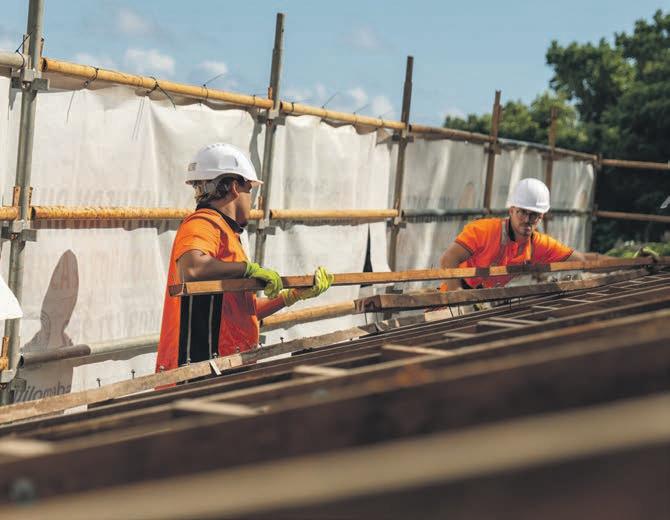


Richmond Valley Council adopted its first Sustainable Communities Strategy in March 2023, marking a pivotal moment in Council’s commitment to environmental stewardship.
This strategy focuses on key areas such as environmental services, rivers and waterways, biodiversity and bushland, and resilient communities and highlights Council’s dedication to building a sustainable future for its community.
In one of many plans and projects from the strategy, Richmond Valley Council and Brunswick
Valley Landcare have produced the updated edition of the Climate Resilient Landscapes booklet. This invaluable resource is a planting guide that helps communities adapt their gardens to a changing climate.
Sustainable Communities Officer
Justine Clarke said the resource guides the community in creating beautiful, thriving gardens and educates them on the benefits of planting native, climate-resilient plants.
‘By doing so, we support local biodiversity and contribute to a whole ecosystem approach,’ said Ms Clarke.
The booklet will be available to download via Richmond Valley Council’s website in June.
Richmond Valley Council has launched its Community Greening Program, which addresses the pressing issue of urban heat, and is committed to planting 15,000 trees over the next two decades.
At the forefront of Ballina Shire Council’s sustainability efforts is its Climate Change Policy which sets organisational emissions reduction targets, and provides a framework for progressing climate change mitigation, adaptation, and resilience strategies for Council and the community.
Council’s corporate targets are more ambitious than the NSW and Australian governments and
aim to: reduce its operational greenhouse gas emissions to netzero emissions by 2030 and use 100 per cent renewable electricity for its operations by 2030.
This bold vision is underpinned by the recent adoption of the Council’s Corporate Emissions Reduction Plan (CERP) in May 2024.
The CERP sets out the pathway to achieve the targets through short-, medium-, and long-term actions.
The key areas of emissions reduction opportunity in the short term are on-site solar and continued energy efficiency initiatives. New areas of focus include adding supply chain emissions to their emissions scope, for example, emissions for purchasing of products and
services and capital works, and investigating carbon sequestration and offsetting strategies.
One of the most exciting aspects of Ballina Council’s approach is its embrace of innovative solar technologies. Council has already made significant strides in this area, generating 10 per cent of its electricity needs from on-site solar installations.
Lismore Council’s Environmental Strategies team works to improve nature and protect animals in their area. They do this by following the Biodiversity Management Strategy, which is funded by the Special Rate Variation.
The team works on projects with local groups to restore land and protect animals. They also help rural landowners improve the environment and educate the public about nature. The team also gives advice to other parts of Council on how to protect the environment.
They restore land in the city through the Urban Green Corridors Plan and help koalas by monitoring their habitats according to the Comprehensive Koala Plan of Management.
Ballina Shire Council’s Climate Change Policy sets more ambitious targets than the NSW and Australian Governments to achieve rapid emissions reduction by: reducing our operational greenhouse gas emissions to net-zero emissions by 2030 using 100% renewable electricity for our operations by 2030
ballina.nsw.gov.au/climate-change-action

The Greens are the only party with a policy on regenerative agriculture, to: keep farms viable nourish soils grow healthy produce boost farmers’ resilience protect the environment

Southern Cross University
Is it possible to turn trash into treasure? Researchers at Southern Cross University are doing just that by partnering with local industries to find new value in their waste streams and transform rubbish into revenue.
The university is harnessing its team of experts in environmental engineering and circular economies to keep waste out of our environment and landfill.
‘The idea is that there’s no waste, just different materials with different purposes. By unlocking the value of a material from one phase of use to another, it enables a model for commercially sustainable and regenerative resource use and reuse,’ says the university’s Professor Andrew Rose, an environmental engineer.
Southern Cross University is implementing these circular economy principles at a local scale through its Northern Rivers Regional Circular Economy Accelerator, or ReCirculator for short, a $2-million federally-funded research program that is working with local businesses to find new

value in their waste streams, benefiting both industry and the environment.
One of these businesses is Studio Kite, a professional prop and model-making company based at The Pocket, which is looking to employ its giant 3D-printer named CADzilla to produce houses made of recycled plastic.
Studio Kite has a prototype house well underway that is easily transported and constructed. The ReCirculator team is facilitating the structural testing of the printed components.
Natural Building & Design
Green e Building offers natural building and design services with ecological regenerative, sustainable and off grid options for anyone in the Northern Rivers.
We believe there is nothing more sustainable than using natural and recycled materials.
Green e Building can design and build your new dream home, sustainably renovate your current home or work with you to add extra rooms and extensions.

To feed CADzilla, the university is working to divert locally-produced plastic waste from landfill.
‘We have access to lots of different plastic material that’s currently waste. And if that can instead be used to create these 3D-printed houses with a minimal carbon



footprint, then that’s a real win for the environment and the regional circular economy,’ says Professor Rose, who is also the Academic Director of ReCirculator.
The University is also looking at other uses for plastic waste, such as construction. In partnership with building materials company CRDC Global, researchers are developing and testing the structural integrity of concrete made with plastic aggregate instead of gravel, with the aim of developing a lighter concrete that is more cost-effective to transport.
Plastic is not the only waste stream that researchers are tackling.
Wastewater from the dairy industry poses disposal challenges, as the nutrient-rich water cannot be released into the environment. Through a partnership with Southern Cross University, Richmond Dairies at Casino is testing ways of extracting nutrients from its wastewater to produce a nutrient-rich fertiliser.
‘Those nutrients are what we’re trying to recapture, and if we can extract the nutrients then the water is of good enough quality to discharge to the local wetland
and provide environmental benefits,’ says Professor Dirk Erler, environmental engineer and Chief Investigator for ReCirculator.
Professor Erler says ReCirculator aims to apply the university’s research and expertise in order to reduce waste streams and create profit for Northern Rivers’ businesses.
‘We are working with industry to develop and test technologies that are profitable and scalable. This is a big picture,’ he says.
Southern Cross University has recently jumped 70 places to rank 100th in the Times Higher Education Young University Rankings 2024 (world’s best universities that are 50 years old or younger).
The University is also ranked in the top 400 universities for Earth Sciences in the Global Rankings of Academic Subjects (Shanghai Rankings) 2023 as well as top 450 for Environmental Sciences in the QS World University Rankings By Subject 2023
■ Learn more: scu.edu.au/ recirculator.

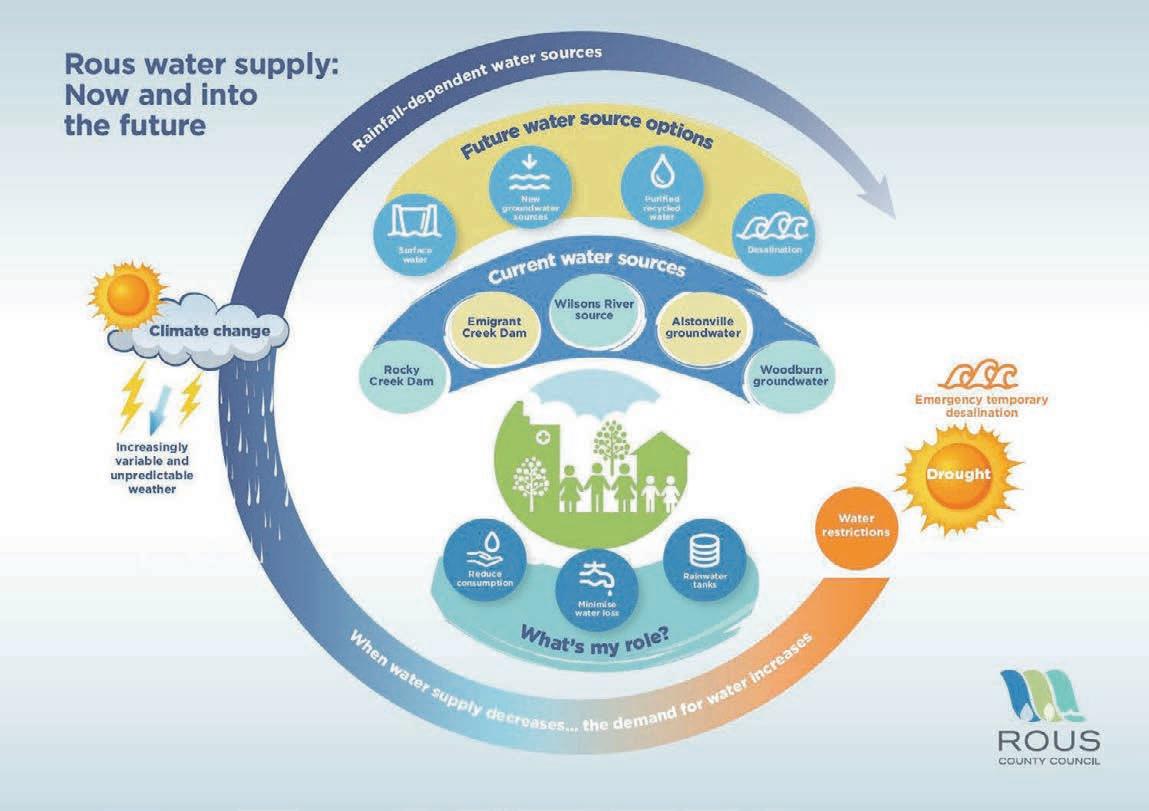
Up to $2,170 rebate for a rainwater tank*
*Terms and conditions apply
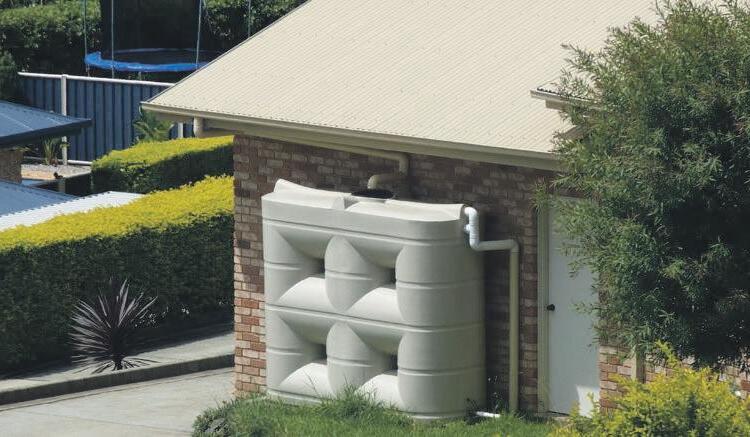
Water efficiency will always be a core focus at Rous, yet with more people wanting to call the Northern Rivers home and with an increasingly unpredictable climate, it's important we plan now to secure new water sources for the future. We're working to ensure the region has a safe and resilient water supply to meet the community’s needs through our Future Water Project 2060.
Use the QR code to find out more.

Looking to save water? Think Tank! ...and receive a rebate
Join the thousands of environmentally conscious locals in our region who have installed a rainwater tank and saved money through Rous County Council‘s rainwater tank rebate program. Rebates of up to $2,170* are available for installing a rainwater tank as well as connecting your rainwater tank to internal fixtures like toilets and washing machines. Installing a tank to harvest rainwater is a great way of saving money on water bills and it also helps to reduce the demand on our drinking water supply.

Available to residents connected to the town water supply in council areas of Ballina, Byron, Lismore and Richmond Valley (*exclusions apply) scan QR code for further details and terms and conditions.
Local businesses partner with Rous County Council to reduce their water use
Local businesses across a variety of industries are taking action to reduce their water use by partnering with the regional water supply authority, Rous County Council through the Sustainable Water Partner Program. These projects have co-benefits for business operations and water sustainability by reducing demand on our limited drinking water supply.
The Sustainable Water Partner Program can support your business to optimise its water use and reduce your environmental footprint. By focusing on how your business can most efficiently use water, your business can improve water savings and save money by reducing your water, sewage, liquid trade waste and energy bills.
This year participating businesses received rebates totalling $30,000 with annual cost savings of $10,000 by implementing water efficiency projects. We offer financial assistance to help your business to implement a range of water efficiency projects. Rebate(s) up to $15,000 per business are available in any one financial year. Terms and conditions apply.
To find out how your business can save water and save money contact our Water Sustainability Officer on (02)6623 3800 or demand@rous.nsw.gov.au






